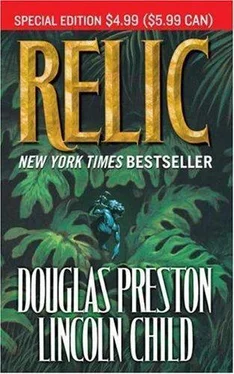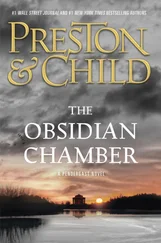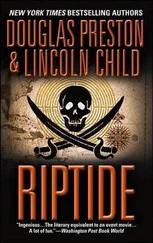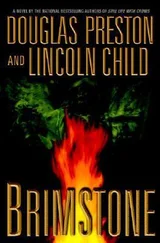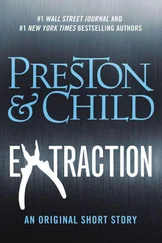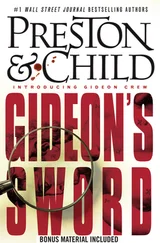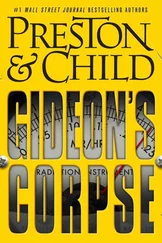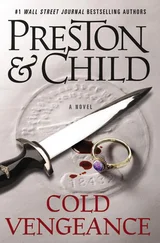Douglas Preston - Relic
Здесь есть возможность читать онлайн «Douglas Preston - Relic» весь текст электронной книги совершенно бесплатно (целиком полную версию без сокращений). В некоторых случаях можно слушать аудио, скачать через торрент в формате fb2 и присутствует краткое содержание. Жанр: Старинная литература, на русском языке. Описание произведения, (предисловие) а так же отзывы посетителей доступны на портале библиотеки ЛибКат.
- Название:Relic
- Автор:
- Жанр:
- Год:неизвестен
- ISBN:нет данных
- Рейтинг книги:3 / 5. Голосов: 1
-
Избранное:Добавить в избранное
- Отзывы:
-
Ваша оценка:
- 60
- 1
- 2
- 3
- 4
- 5
Relic: краткое содержание, описание и аннотация
Предлагаем к чтению аннотацию, описание, краткое содержание или предисловие (зависит от того, что написал сам автор книги «Relic»). Если вы не нашли необходимую информацию о книге — напишите в комментариях, мы постараемся отыскать её.
Relic — читать онлайн бесплатно полную книгу (весь текст) целиком
Ниже представлен текст книги, разбитый по страницам. Система сохранения места последней прочитанной страницы, позволяет с удобством читать онлайн бесплатно книгу «Relic», без необходимости каждый раз заново искать на чём Вы остановились. Поставьте закладку, и сможете в любой момент перейти на страницу, на которой закончили чтение.
Интервал:
Закладка:
Kawakita winked and leaned over. “You owe me one now, kid.”
“Anytime,” said Margo. Kid. Owing him one . She disliked people who talked like that. And when Kawakita said it, he meant it.
Kawakita stretched, sneezed again. “I’m off. Gotta grab some lunch, then go home and pick up my tux for the party tonight. I wonder why I even bothered to come in today—everybody else is home preparing for tonight. I mean, look at this lab. It’s deserted.”
“Tux, eh?” said Margo. “I brought my dress with me this morning. It’s nice, but it’s not a Nipon original or anything.”
Kawakita leaned toward her. “Dress for success, Margo. The powers that be take a look at some guy wearing a T-shirt, and even though he’s a genius they can’t visualize him as Director of the Museum.”
“And you want to be Director?”
“Of course,” said Kawakita, surprised. “Don’t you?”
“What about just doing good science?”
“Anybody can do good science. But someday I’d like a larger role. As Director, you can do a lot more for science than some researcher fiddling in a dingy lab like this. Today it’s just not enough to do outstanding [267] research.” He patted her on the back. “Have fun. And don’t break anything.”
He left, and the lab settled into silence.
Margo sat for a moment, motionless. Then she opened up the folder with the Kiribitu plant specimens. But she couldn’t help thinking there were more important things to be done. When she’d finally reached Frock on the phone, and told him about what little she’d found in the crate, he had grown very quiet. It was as if, suddenly, all the fight had gone out of him. He’d sounded so depressed, she hadn’t bothered to tell him about the journal and its lack of new information.
She looked at her watch: after one o’clock. The DNA sequencing of each Kiribitu plant specimen was going to be time-consuming, and she had to complete the sequencing before she could use Kawakita’s Extrapolator. But as Frock had reminded her, this was the first attempt to do a systematic study of a primitive plant classification system. With this program, she could confirm that the Kiribitu, with their extraordinary knowledge of plants, had actually classified them biologically. The program would allow her to come up with intermediate plants, hypothetical species whose real counterparts might still be found in the Kiribitu rain forest. At least, that was Frock’s intention.
To sequence DNA from a plant, Margo had to remove part of each specimen. After a lengthy exchange of electronic mail that morning, she had finally been given permission to take 0.1 gram from each specimen. It was just barely enough.
She stared at the delicate specimens, smelling faintly of spice and grass. Some of them were powerful hallucinogens, used by the Kiribitu for sacred ceremonies; others were medicinal and quite possibly of great value to modern science.
She picked up the first plant with tweezers, slicing off the top portion of the leaf with an X-Acto knife. In a mortar and pestle, she ground it up with a mild enzyme [268] that would dissolve the cellulose and lyse the cells’ nuclei, releasing the DNA. She worked swiftly but meticulously, adding the appropriate enzymes, centrifuging the result and performing a titration, then repeating the process with other plants.
The final centrifuging took ten minutes, and while the centrifuge vibrated in its gray metal case, Margo sat back, her mind wandering. She wondered what Smithback was doing in his new role as Museum pariah. She wondered, with a small thrill of fear, whether Mrs. Rickman had discovered the missing journal. She thought about what Jörgensen had said, and about Whittlesey’s own description of his last days on earth. She imagined the old woman pointing a withered finger at the figurine in the box, warning Whittlesey about the curse. She imagined the setting: the ruined but overgrown by vines, the flies droning in the sunlight. Where had the woman come from? Why had she run off? Then she imagined Whittlesey taking a deep breath, entering that dark hut of mystery for the first time ...
Wait a minute , she thought. The journal had said they encountered the old woman before entering the deserted hut. And yet, the letter she found wedged in the lid of the crate clearly stated that Whittlesey discovered the figurine inside the hut. He didn’t enter the but until after the old woman ran away.
The old woman was not looking at the figurine when she cried out that Mbwun was in the crate! She must have been looking at something else in the crate and calling it Mbwun! But nobody had realized that, because they hadn’t found Whittlesey’s letter. They’d only had the journal for evidence, so they’d assumed Mbwun was the figurine.
But they were wrong.
Mbwun, the real Mbwun, wasn’t the figurine at all. What had the woman said? Now white man come and take Mbwun away. Beware, Mbwun curse will destroy you! You bring death to your people!
[269] And that’s just what had happened. Death had come to the Museum. But what inside the crate could she have been referring to?
Grabbing the notebook from her carryall, she quickly reconstructed a list of what she had found in Whittlesey’s crate the day before:
Plant press with plants
Blow darts with tube Incised disk (found in the hut)
Lip plugs
Five or six jars with preserved frogs and salamanders (I think?)
Bird skins
Flint arrowheads and spear points
Shaman’s rattle
Manta
What else? She rummaged in her handbag. The plant press, disc, and shaman’s rattle were still there. She laid them on the table.
The damaged shaman’s rattle was interesting, but far from unusual. She’d seen several more exotic specimens in the Superstition exhibition.
The disk was obscure. It showed some kind of ceremony, people standing in a shallow lake, bending over, some with plants in their hands, baskets on their backs. Very odd. But it certainly didn’t seem to be an object of veneration.
The list wasn’t helpful. Nothing inside the crate had looked remotely like a devil, or whatever else could inspire such terror in an old woman.
Margo carefully unscrewed the small, rusty plant press, its screws and plywood holding the blotter paper in place. She eased it open and lifted off the first sheet.
It held a plant stem and several small flowers. Nothing she had ever seen before, but not particularly interesting at first glance.
[270] The next sheets in the press contained flowers and leaves. It was not, Margo thought, a collection made by a professional botanist. Whittlesey was an anthropologist, and he had probably just picked these specimens because they looked showy and unusual. But why would he collect them at all? She went through all the specimens, and in the back found the note she was looking for.
“Selection of plants found in overgrown abandoned garden near hut (Kothoga?) on September 16, 1987. May be cultivated species, some may also be invasive after abandonment.” There was a little drawing of the overgrown plot, showing the location of the various plants. Anthropology , thought Margo, not botany . Still, she respected Whittlesey’s interest in the relationship the Kothoga had to their plants.
She continued her inspection. One plant caught her eye: it had a long fibrous stem, with a single round leaf at the top. Margo realized it was some kind of aquatic plant, similar to a lily pad. Probably lived in an area of floods , she thought.
Then she realized that the incised disk found in the but showed the very same plant. She looked at the disk more closely: it depicted people harvesting these very plants from the swamp in a ceremony of sorts. The faces on the figures were twisted, full of sorrow. Very strange. But she felt satisfied to have made the connection; it might make a nice little paper for the Journal of Ethnobotany .
Читать дальшеИнтервал:
Закладка:
Похожие книги на «Relic»
Представляем Вашему вниманию похожие книги на «Relic» списком для выбора. Мы отобрали схожую по названию и смыслу литературу в надежде предоставить читателям больше вариантов отыскать новые, интересные, ещё непрочитанные произведения.
Обсуждение, отзывы о книге «Relic» и просто собственные мнения читателей. Оставьте ваши комментарии, напишите, что Вы думаете о произведении, его смысле или главных героях. Укажите что конкретно понравилось, а что нет, и почему Вы так считаете.
